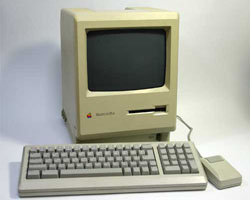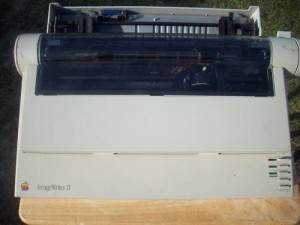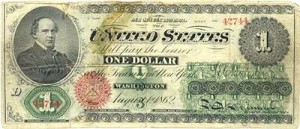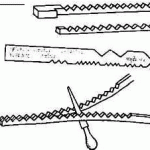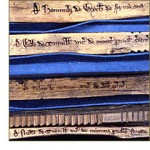The bankers, politicians and deceived public have made a mockery out of our economic system by distorting and corrupting it. Many believe the problem is fiat money – that all money should be backed up with gold or some other commodity.
We have examined the gold systems of the past and numerous alternatives and have discovered they all have flaws.
Fiat money itself is not the great evil just as Don’s cherries were not a problem. The problem was Don was deceived into going needlessly into debt to purchase something that he already owned.
Even so, fiat money is not the problem as much as the fact that we purchase it rather than create it ourselves.
Here’s a parable that illustrates the positive side of fiat money when correctly created and used.
Parable of Money Systems
A master teacher called his 144,000 servants before him and spoke.
“I am dividing you into two groups and want each group to build a city for me. You are to start with nothing but your own wisdom and strength and the land that I will grant to you which shall be sufficient for your needs. By cooperating and working together you can build a beautiful city that will glorify the kingdom.”
“Each group will apply themselves a littler differently according to their own intelligence and in the end one will be more effective than the other. The results of the contrast between the two methods will teach us a valuable lesson.”
The teacher then directed them to the land they were to occupy and gave them some time to move their possessions thereon. After they were settled in and camped in tents they were instructed to begin.
For a few days nothing much happened for there was no leadership and each group of 72,000 had many contrasting ideas of how to proceed. Finally, both groups decided to elect leaders, for without leadership they seemed to be like ships adrift at sea with no rudder.
They spent the next few weeks electing leaders on several levels that gave the groups capacity to govern the whole. After this the presidents of both groups called their people together and gave similar messages:
“My Friends,” said one of them. “Our master teacher has given us a great assignment, but so far all we have done is gather, get settled in and elect leaders. Now is the time for action and we must proceed.”
“But how are we to proceed?” asked a member of the audience. “All we have is the bare necessities to survive let alone build a city.”
The President spoke, “Apparently our teacher thinks we have the ability to create the tools and gather all; the ingredients to build a city. Yes, it will take a lot of work and ingenuity, but I believe we can succeed and make our teacher proud. We must therefore divide into work groups and proceed with making tools and gathering the needed raw materials.”
Both groups created assignments of duty and proceeded, but after a short time the leaders became painfully aware that the work was proceeding very sluggishly. Both presidents sent consultants to investigate the problem and both received a similar report. Said one, “The people are complaining. Many are slow or reluctant to work because their fellow workers are not doing their share. Everybody is waiting for the other guy to work before he works.”
“The problem,” said the President, “Is the Teacher gave us no money to begin this project so we are left with working with natural motivation to get the job done.”
A consultant responded, “We’re finding out without pay the people will do very little for the group good. We need some type of money to pay them with. If we had money we could get them to work.”
The President rose up, walked back ands forth, and spoke, “If its money they need then its money they shall have. We will create a money system and pay the workers. Have the consultants draw up a plan.”
Up to this point the two groups proceeded similarly. However, the two groups of consultants came up with two plans for the creation of money which were very different.
The first group of consultants approached their President. “Sir, we believe that we cannot create real money out of thin air. It has to be backed up by something tangible such as a precious metal.”
“Suppose we had all the people deliver all their belongings to a central storehouse and we use these as backing for money,” said the President.
The head consultant spoke, “Taking what little they have would have to be done by force and even if we could do this their possessions are few and there is not enough to create the money we need.”
“What do you suggest then?” said the President.
“Even though we do not have the precious metals now we can get them. There is gold in the nearby hills that we can mine. As soon as we get a supply we can then issue money which is backed by a real tangible material – gold. We can mine the gold, store it in vaults and then issue money to pay for labor. We know the people will work for money so at that point the work can proceed as we direct.”
“It’s quite possible the other group will have this same idea. Is there enough gold for both of us?” asked the President.
“The area where the gold is located is only large enough to accommodate one group. If two of us go at it then we will be at each other’s throat,” said the consultant.
“Then we must secure the area immediately and claim it for ourselves,” said the President.
The first group then proceeded to lay a claim to the area wherein the gold was deposited, built a fence around it and set guards so only their group could have access. After this, most of the group began participating in mining for gold.
Around this time the second president called his consultants together and contemplated the same problem. When one of them proposed creating money backed by gold another answered, “Unfortunately, the other group has moved forward with this idea and has staked out a claim on the only gold in the area. The only way for us to obtain gold is to go to war with them.”
“That’s pout of the question,” said the President. “There must be another way. Are there more precious metals available to mine we could use?”
“None that we know of.”
“Is there any other way that we can create money then? Speak if any of you have ideas.”
“There is another way,” said another consultant. “We can create it out of thin air.”
“That sounds outrageous,” said the President. “Surely you can’t be serious.”
“I’m very serious,” said the consultant. “Actually the creation I am talking about is not really out of thin air at all, but it can seem that way to those who believe that the only real money is backed by a precious metal.”
“You’ve got my interest. Tell me your plan.”
The consultant moved forward and spoke, “My plan will not only create real usable money, but it will save us all kinds of useless time digging for gold and storing it. This will allow us the advantage of completing the city much faster than the other group.”
“I see your point,” said the president. “The other group is now spending all their time digging for gold and this shall continue for heaven knows how long. If we can avoid doing this then we shall have an advantage indeed. How do we proceed?”
“Here is how it works. We will issue money by fiat but it will have value unlike money printed up by some guy on his own in a basement.”
“How is that?” said the president.
“The fiat money will be backed by the people’s good faith in the government of our perspective city and each dollar will represent not gold, but labor. Each twenty dollar bill will represent an average of an hour’s labor.”
An average?” he asked.
“Yes. Some people without skill may only have their labor valued at $10 a hour while some with skills may be valued at $50 or more. By averaging the value I have calculated that the average value of an hour’s labor is about $20.
“So how do we distribute the money?”
“We just print up what we will need to keep people employed and enter the bills in circulation as needed to pay for their labor. Then as the money re-circulates we will need to introduce smaller amounts, but only what is needed to maintain a stable balance.”
“I see two possible problems,” said the President. “Something could happen to take the money out of circulation producing deflation or we could have unscrupulous people in the government print up too much money and we would have inflation where the dollar would lose its value.”
“But that’s a danger around the creation of money by any means,” said the consultant. “If the other group has their gold stolen or they print up too much money in relation to the gold supply then they face the same problem we do. In fact, other kingdoms have had this problem with money related to gold since paper notes have existed.”
“The only way to make sure our money remains stable is responsible oversight. There is no other way with any paper currency.”
“I see your point,” said the President. “I also see another advantage that may have escaped you.”
“What’s that?”
“If there was a large gold discovery or if our alchemists solved the problem of transmuting lead into gold then the value of the other group’s money would plunge and their society could be destroyed.”
“Yes, that is a possibility,” said the consultant.
“But the value of an hour’s labor is always worth an hour’s labor and our dollar can remain steady as long as the money supply is wisely measured.”
“That is correct,” said the consultant.
“Then let us proceed,” said the President. “We will dispense with the wasted time of mining for gold and immediately begin work on gathering materials for the city.”
The second group then explained the program to its citizens and paid the workers in fiat money as they commenced labor. Within a short period of time the whole community was bristling with activity and the foundations to the city began.
When the first group saw that the second group had already laid the foundations to the city while they were still mining for gold they became alarmed. This alarm reached the President and his consultants.
“What is this?” said the first President. “The other group has reached full employment and has not only gathered raw materials but is laying the foundation to their city. All this has been accomplished while we are still mining for enough gold to create sufficient backing to employ the kingdom.”
A consultant stepped forward and explained, “There’s nothing to worry about. We have done some research and discovered the second group is not using real money. They are using fiat money which is just manufactured out of thin air.”
“What do you mean thin air? How does thin air get the jump on us in creating full employment and building a city?”
“They are cheating, sir and their cheating will soon catch up with them. Because their money is not based on gold or any tangible commodity it will only be a matter of time before their system collapses completely. Then we can offer then some of our gold, buy up all their materials and be the first to complete the city.”
“Are you sure about this?” asked the President. “It looks like the people are convinced they are getting real money and as long as they are convinced they will keep building the city.”
“But they are fooled by a deceptive government and bankers,” said the consultant. “We shall expose them and the day will soon come that their house of cards will come tumbling down.”
Both groups then proceeded with their various philosophies on money. It took a year of struggle and sacrifice before the first group mined sufficient gold to create a viable money system but even after this they had to keep a portion of their people mining for gold to keep new gold infused into the system. These people who mined the gold were unable to perform any labor that contributed to the building of the city.
Two years passed and several times it looked like both money systems would fail. It turned out there was criminal negligence on both sides but the leadership of both governments were upright enough to catch their mistakes and correct them.
Each time the second group had any problem with their money the first group relaxed their labors thinking there would soon be a collapse and they would soon own the materials of both cities. But it turned out that both the fiat and the gold backed money had the same problems and both required honest government to insure that the people could prosper.
Another year passed and the second group had completed a beautiful city with housing for all the inhabitants. The city of the first group was only half done and many homes lay unfinished.
At this time the teacher called the leaders of both groups to appear before him.
“I see that one group has completed a beautiful city and the other has not. Tell me what has made the difference here?”
The President of the first group stepped forward and explained. “Sir, the second group has cheated. They paid their group with funny money created from nothing. We created our money from gold stored in vaults and it will retain its value while the economy of the other group will soon come crashing down and then we will buy the whole city for pennies on the dollar.”
“But I see before me a beautiful city,” said the teacher. “Such beauty is not created from nothing. Perhaps the other president can explain.”
The second President stepped forward and explained. “You are right sir, this city was not created from nothing. We issued money that was backed by the good faith of the people in their own labor. Labor may not be visible as is gold, but it is not nothing. As proof look and see what our money backed by labor has produced.”
“I understand you had a culprit that printed up some extra money for selfish ends,” said the teacher.
“Yes,” said the second President, “but so did the other group. We both had some problems because of it and we both made corrections.”
“I see,” said the teacher. “So you both had viable money systems and honest government. How do you explain the fact that you finished your city so much faster than the gold standard group?”
The second President answered, “Because gold in a vault by itself does not produce anything, but takes away many productive labor hours to mine and refine. We took all those hours and spent them building the ingredients of a city that adds joy to the lives of the inhabitants. Gold in a vault by itself accomplishes nothing.”
The first President then became very angry and exclaimed, “My teacher, you do not understand. We have the only viable money system. This other money system is based upon lies. Just wait another year or so and their system will completely collapse and we shall buy up the whole thing. Then we shall own both cites.”
The teacher contemplated and responded, “My friend, do you not see the wisdom of the second group who are relying on the value of labor rather than visible objects?”
“But sir, their money is fiat money built upon nothing!”
The teacher thought again and responded, “Then perhaps I must teach you where the real value of money lies.” He then took an ancient scroll from a table and handed it to the second President. “Here is the formula for transmuting lower elements into higher ones. With this you can make all the gold, silver and other metals you wish. You can pave the streets of your city with gold if you wish.”
The first President spoke again, his voice quaking, “If he makes enough gold to pave his streets then there will be so much gold our money will become useless and the effort we have made will come to an end. Please don’t do this to us.”
“I am not hurting you. You are hurting yourself,” said the teacher. “I am also giving you the opportunity to pave your streets with gold. All you have to do is learn your lesson that labor will always have value, a value that will outlast gold or any other commodity. Have faith in the labor of your brothers and you shall prosper and pave your streets with gold, otherwise your people will rebel against you and your fate shall be a terrible thing.”
After thinking long and hard the first President swallowed his pride and sought to change his money system to be based in the faith of the labor of his brethren. It was not long before the cities were completed and both had streets of gold that sparkled in the sun.
Read This entire series. Here are the links.
- The Economy – One Last Chapter
- Creating Sound Money
- The Gold Standard, Part 1
- The Gold Standard, Part 2
- The Gold Standard, Part 3
- The Gold Standard, Part 4
- The Gold Standard, Part 5
- The Gold Standard, Part 6
- The Gold Standard, Part 7
- The Fed and Common Sense
- Additional Points
- Alternative Currency
- Giving Away Our Power
- Parable of Money Systems
- To Fiat or Not Fiat
- Fiat Money of the Past, Part 1
- Fiat Money of the Past, Part 2
- Fiat Money of the Past, Part 3
- Fiat Money of the Past, Part 4
- Fiat Money of the Past, Part 5
- Fiat Money of the Past, Part 6
- Examining Fiat Money
- A Flawed Money System
- The Ideal Money
- A Time for All Things
- The New Greenback
- Narrowing the Focus
- People Taking Charge
- Creating Wealth
Copyright 2011 by J J Dewey
Copyright by J J Dewey
Index for Older Archives in the Process of Updating
Index for Recent Posts
Easy Access to All the Writings
Register at Freeread Here
Log on to Freeread Here
For Free Book go HERE and other books HERE
JJ’s Amazon page HERE
Gather with JJ on Facebook HERE
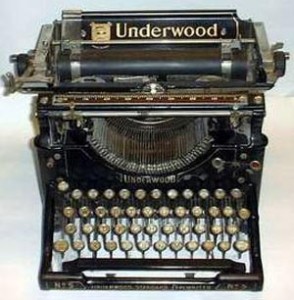 I used a hunt and peck method and managed to type out a few things with it. Then in December of that year I was in an explosion that rendered my left hand useless for typing. I continued anyway using one hand and still managed to get some stories typed out.
I used a hunt and peck method and managed to type out a few things with it. Then in December of that year I was in an explosion that rendered my left hand useless for typing. I continued anyway using one hand and still managed to get some stories typed out.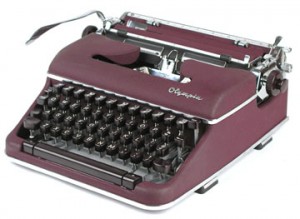 It is interesting to note that $80 in 1961 is equivalent to over $600 today.
It is interesting to note that $80 in 1961 is equivalent to over $600 today. This cost me around $1000 at the time and was state of the art and produced typeset quality type. I was happy with this until the Mac Plus came out in 1986. When I saw that it could typeset like a $25,000 machine I was sold and had to have it. It cost $2595 at the time and the Image Writer for printing was $595.00. since I would use it for business as well as writing I figured the investment would pay off.
This cost me around $1000 at the time and was state of the art and produced typeset quality type. I was happy with this until the Mac Plus came out in 1986. When I saw that it could typeset like a $25,000 machine I was sold and had to have it. It cost $2595 at the time and the Image Writer for printing was $595.00. since I would use it for business as well as writing I figured the investment would pay off. Then a couple years later I was sold on upgrading to the performa 600. This had a lot faster clock speed and I thought it wold be a much faster machine. Here it is:
Then a couple years later I was sold on upgrading to the performa 600. This had a lot faster clock speed and I thought it wold be a much faster machine. Here it is:
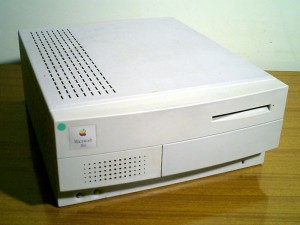 This was a huge disappointment. Not only was it much slower than any previous Mac but it took ages to boot up. It was around this time that Apple was having many problems and many thought it may go under. I thought I might have to face the possibility of switching to the PC. The thought of this made me cringe.
This was a huge disappointment. Not only was it much slower than any previous Mac but it took ages to boot up. It was around this time that Apple was having many problems and many thought it may go under. I thought I might have to face the possibility of switching to the PC. The thought of this made me cringe.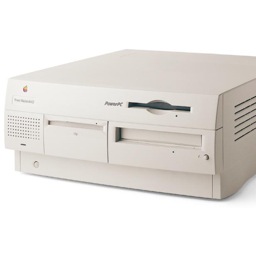 At this time my wife also worked with me and we got an iMac like this one for her:
At this time my wife also worked with me and we got an iMac like this one for her: Then in 2001 I got my first notebook the G3 ibook:
Then in 2001 I got my first notebook the G3 ibook: